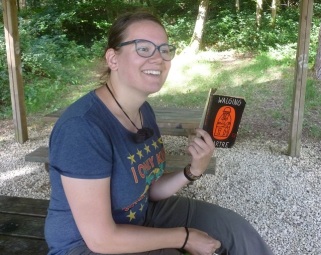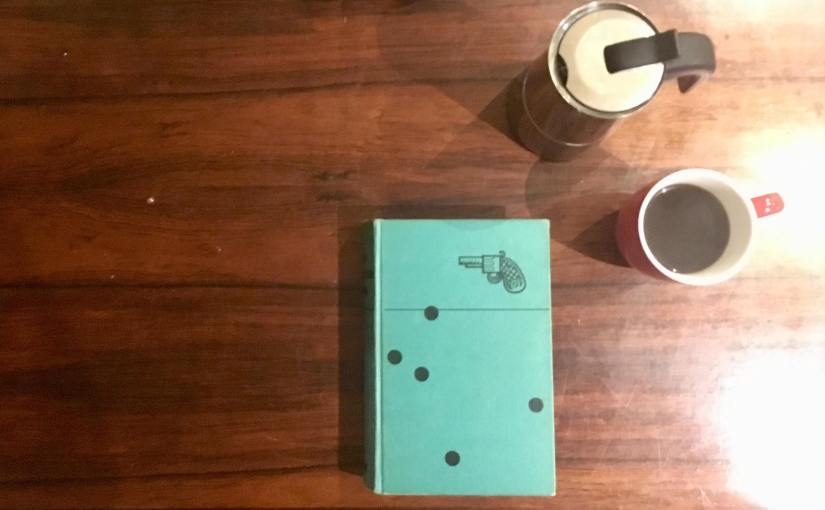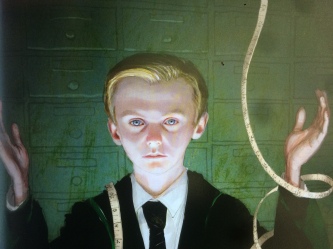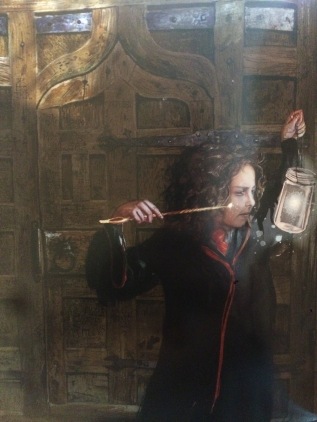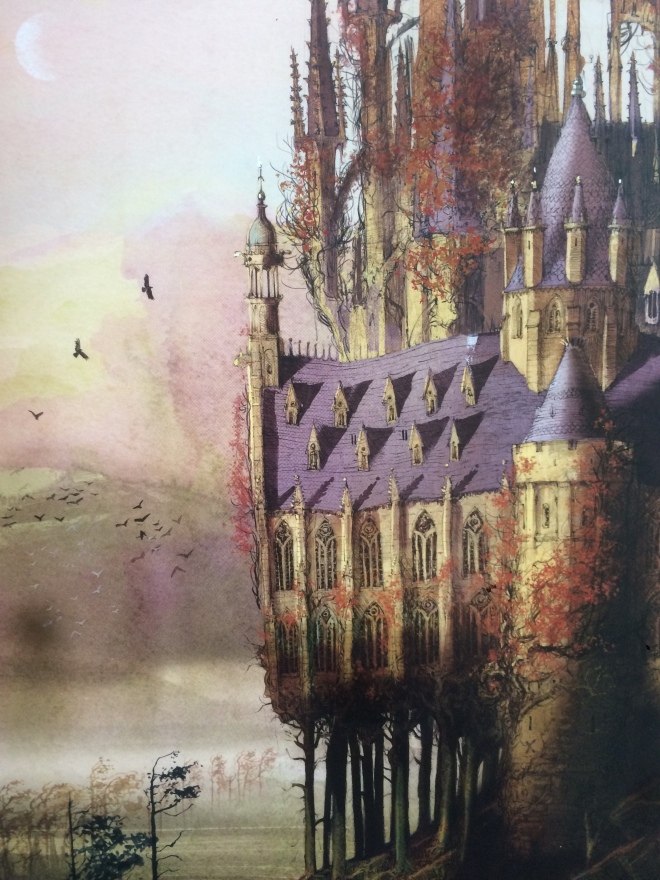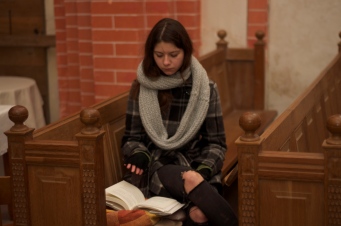Sometimes, not often, you come across an adaptation or BBC miniseries that is so great that it actually probes you to read the book. North and South by Elizabeth Gaskell was adapted into a brilliant miniseries by the BBC in 2004 and I saw that before I’d actually read the book, which doesn’t happen often. Of course, some things have been altered for the adaptation, which is the reason why many lovers of the book dislike the series. In the same way, the book does offer more than the series does, but that’s always the case. This is a strange way to start off a book review, but I do want to mention that this is one of those rare occasions where I think the BBC did a magnificent job, by creating a series practically as good as the book and because it caused me to read Gaskell’s magnificent Victorian work on class-structures and the Industrialisation.
Margaret Hale is the young daughter of a simple village clergyman. Up until her eighteenth birthday, she has lived in London for years with her aunt and cousin, who are far more wealthy than Margaret’s family is and where she has received her education. When her cousin Edith marries a Captain Lennox, Margaret moves back into her childhood home in the rural village of Helstone. Margaret is glad to be back at home again, at paradise as she calls it, but their life is rudely interrupted when her father confesses to her that he has to leave the Church of England on a matter of conscience. Because they have very little money and a part of it is always sent to Margaret’s brother Frederick, who is abroad and is surrounded by great mystery for the first half of the book, they can’t afford to stay anywhere apart from the industrial town of Milton-Northern.
After Margaret has told her mother that they have to go, because her father can’t bring himself to tell her, they leave for the dirty and smoky town of Milton. Mr Bell, an old friend of her father’s from Oxford, owns property in Milton and manages to arrange everything needed for the Hale family. In their new surroundings, Margaret’s father takes up a teaching position and his first pupil is a Mr Thornton, who is an influential manufacturer and the master of Marlborough Mills. When Margaret and Mr Thornton meet, he thinks she is a beauty, but a woman with too many ‘airs and graces’. She thinks of him as hard and unfeeling, though she does admire his climb from poverty. After a few months in Milton, Margaret is struck by the poverty she encounters, the harshness of life in a town filled with cotton-factories, and she feels lonely. At the same time, her mother withers away in the smog-filled town and suffers increasingly of low spirits.
Through Nicholas Higgins and his daughter Bessy, Margaret first becomes acquainted with the large group of workers at the town. Nicholas Higgins is a proud and suspicious man and Bessy is terminally ill because of all the fluff she has swallowed while working at the mill. Then the tension between masters and workers comes to a boiling point and the workers go on a strike. Margaret, at this point, has learned the workers’ point of view and tries to defend them to Mr Thornton. But when the workers are at the door and the situation turns potentially violent, Margaret rushes to Thornton’s aid and is struck down by a stone. This in turn leads to Thornton believing that Margaret cares for him and he proposes to her, but she refuses his offer. The second part of the book is all about Margaret and Thornton as opposites, as are the masters and workers, the north and the south, until opposites slowly start to move towards each other.
Without wanting to give away too many spoilers, I ended my summary by saying that this book is all about opposites eventually coming together. This isn’t quite true for all of them, but it certainly is for Margaret and Mr Thornton. This entire novel is about opposing forces, clashing and occasionally meeting in the middle, if only for a few seconds. There is the striking theme of the innovation of machinery, modernity if you like, opposite traditional ways of living. In the book we see this reflected in the modern North, where life is fast-paced, cold-hearted according to some, but you have to remember that England at that time was watched by the world because of its trade and machinery. Mass-production of cotton was just one of the trades, and it all started in dirty, smoky towns like the fictional Milton. On the other hand there is the South, which Margaret tends to romanticize in the beginning of the book, where the days are slow and gentle and where her family was once respected as country gentry. Here the roles are set, but in the North, however harsh, one can work his way up in the world, like Mr Thornton has. When the danger of the upcoming strike begins to take shape in the book, the subject of rebellion and authority takes shape. This has everything to do with the question of what is fair and the right thing to do; a subject that reappears in the novel when Frederick’s past is explained. But there is so much more I could talk about: dreams versus reality, rural versus urban areas, male versus female roles. Interestingly enough, I’d say this book is also about the reversal of these roles, especially when it comes to male and female gender roles.
Much to my dismay, I’ve read many reviews of people complaining about the character of Margaret and how they had expected her to be so much more feisty, but were disappointed when they actually read the book. I love Margaret and I don’t agree that it takes her half the book to find her backbone. Please keep in mind that this is a Victorian novel and women fist fighting their way through a crowd is something we simply can’t hope for, but a woman taking charge of a family moving because the father can’t bring himself to do it or a woman jumping in front of an angry mob out of sheer worry and little care for her own safety, now that’s the true Victorian heroine I’ve been waiting for. I highly enjoyed reading about Mr Thornton as well, because course and harsh as he seems, he is capable of change, but the women especially are interesting to me, because you so often find that they are merely two-dimensional background-filling creatures in these classics. I think my absolutely favourite is Mrs Thornton, the mother made of iron and smoke, who seems to be the epitome of all that a place like Milton can offer. She is unbelievably hard and worn by life, though never gloomy or passive, and when she speaks of how a woman grown up in Milton will soon know whether she is a coward or not, I started jumping up and down with my book in hand because of the excitement I felt. Don’t get me wrong, I’m glad she’s not my mother-in-law, but on paper she is a true role model.
Elizabeth Gaskell sometimes appeared to be the forgotten writer of the Victorian age, which is a shame! She has written wonderful books on all walks of Victorian life. To me it seems she pays more attention to the very poorest than any other writer, except maybe Dickens. In fact, there are quite a few similarities to be found to Dickens’ style of writing. The one that struck me was in the character of Bessy Higgins, the sickly girl who hasn’t got long to live because of her harsh life at the mills. She mentions a few times how she would welcome death when it comes, so all in all she appears to be nothing less than a depressing character. But she does have a function in the story, much like Tiny Tim has in Dickens’ A Christmas Carol, because out of frustration Bessy calls out: “All I’ve been born for is just to work my heart and my life away, and to sicken i’ this dree place, wi’ them mill-noises in my ears forever.” Bessy doesn’t die without pointing the attention to the bad working conditions of that time and the hard rise of capitalism caring little for human life. I wondered if in that moment we actually hear Elizabeth Gaskell speaking, full of indignation and anger about the age she lived in. Either way, this is just one example of the social issues that Gaskell brings to light in her novel and of how the language she uses draws you in and makes it impossible to put down the book.
Now I can’t end my review without saying something about the love story. But there is a reason for my putting it off for so long because for me it is not the most important thing of the book. It does seem natural, good and exciting, but it’s not needed. I put it like this, because it has everything to do with the male and female role reversal I mentioned before. Margaret grows from a young country daughter into a strong woman of property and influence. Mr Thornton has had a difficult childhood and has worked all his life, which has made him cold and unfeeling, or so it seems. But when he learns to understand others, Margaret, but also Nicholas Higgins, he changes as a person. When Margaret learns to let go of some of her prejudices and Mr Thornton learns to open up, these two opposites meet in the middle. And here we come to one of my favourite details of the book! They meet in London to discuss business, literally meeting half-way, and that is when they stay together. I loved how there was no damsel in distress, no condescending man and no overly romantic proposal. It just happens between two equals. What a thoroughly modern woman Elizabeth Gaskell must have been!
I know the opinions of the BBC miniseries are very much divided: some love it, some hate it. The reason I love it has to do with two elements of the series. Firstly, the characters of Mr Thornton and his mother were perfectly casted. They are exactly how I imagine them when I’m reading the book. Secondly, the entire atmosphere of industrialised England is fantastically filmed. The drive of innovation on the one hand and the extreme poverty and hopelessness that came with it on the other hand: in just a few shots the series manages to convey this complex history. Someone on Goodreads mentioned that this book is basically Pride and Prejudice for socialists. Maybe that’s why I like it so much. Either way, it’s a brilliant book, giving you a window into history unlike anything I’ve ever read, with a great and unique love story to match!
Working Class Heroes Award: For the actual working class heroes
Elizabeth Gaskell, North and South (London, 1854)

Thura Nightingale







